Portland's Hottest Microhoods
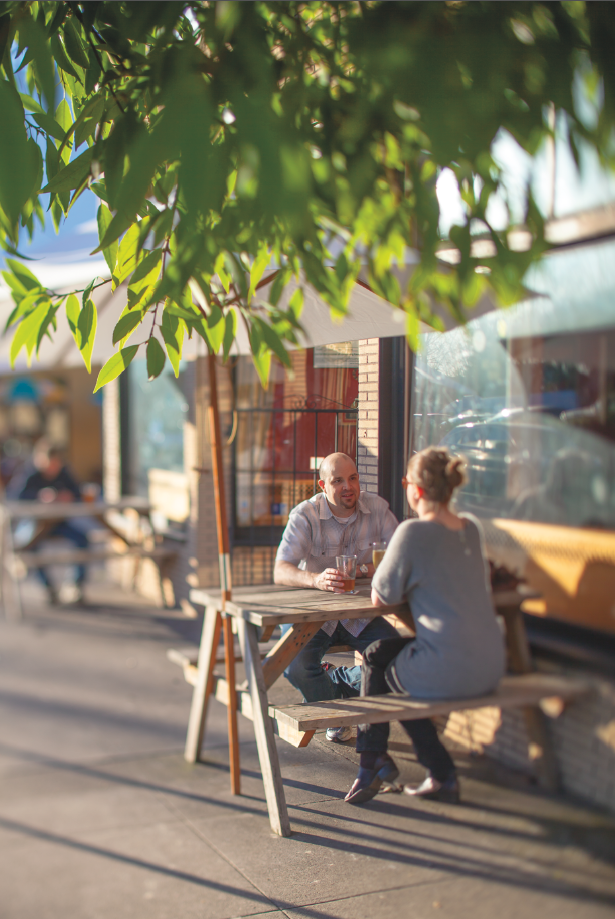
Image: Stuart Mullenberg
Forget gray hairs. Over the past few years, real estate has given us wrinkles. Falling home prices, rising foreclosures rates, and painfully long market times all etched lines into our continuously furrowed brows. But finally, finally, we get something to give us a grin. Prices in Portland are up 6 percent over last year, home sales are up 20 percent, and time on the market is down to 64 days (two weeks less than in 2011), according to the Regional Multiple Listing Service. In a joint-produced 2013 real estate report, the Urban Land Institute and Pricewaterhouse Coopers put Portland in the country’s top 20 markets to watch. Of course, we remain well shy of Portland’s peak median price of $302,000 in 2007 (in 2012, the median was $249,900), but our low inventory could help improve things.
Portland’s home inventory supply at the beginning of 2012 sat at seven or eight months. Today it’s hovering around three, meaning the market meter’s arrow has moved from the buyers’ favor to sellers’. That led to an “adjustment” for clients intially, says Keller Williams principal broker Nick Krautter. “We had to counsel them that what had been happening for five years really just wasn’t happening anymore,” he says.
One rule that still applies: the “location location location” adage. But it has changed. The 20-minute neighborhood (the idea that people want places to shop, eat, drink, and recreate within easy walking or biking distance) has, in some places, shrunk as the artisan craft movement that’s spawned so many nano–coffee roasters, brewers, furniture makers, and designers extends to neighborhoods, too. The result: a kind of “microhood”—attractive pockets of retail and residential that appeal to a particular set of interests or values, like SE Division Street’s culinary cachet or N Williams Avenue’s bike appeal. “It’s not that other cities aren’t doing these things,” notes Matthew Gebherdt, an assistant professor in Portland State University’s real estate program, “but in Portland it’s kind of a status symbol.”
In this year’s real estate feature, we spoke to agents, developers, lenders, and appraisers to identify and explore seven such microhoods and to dig into the trends pushing our housing market ever so slowly toward recovery. After all, if real estate is going to give us wrinkles, we’d just as soon they were smile lines.
North Pearl & Slabtown • North Williams Avenue
Dekum Triangle • SE Division Street • NE 42nd Corridor
Orenco Station • Interstate & Killingsworth
Real Estate Growth Map • Current Market Trends • Rental Market Madness
{page break}
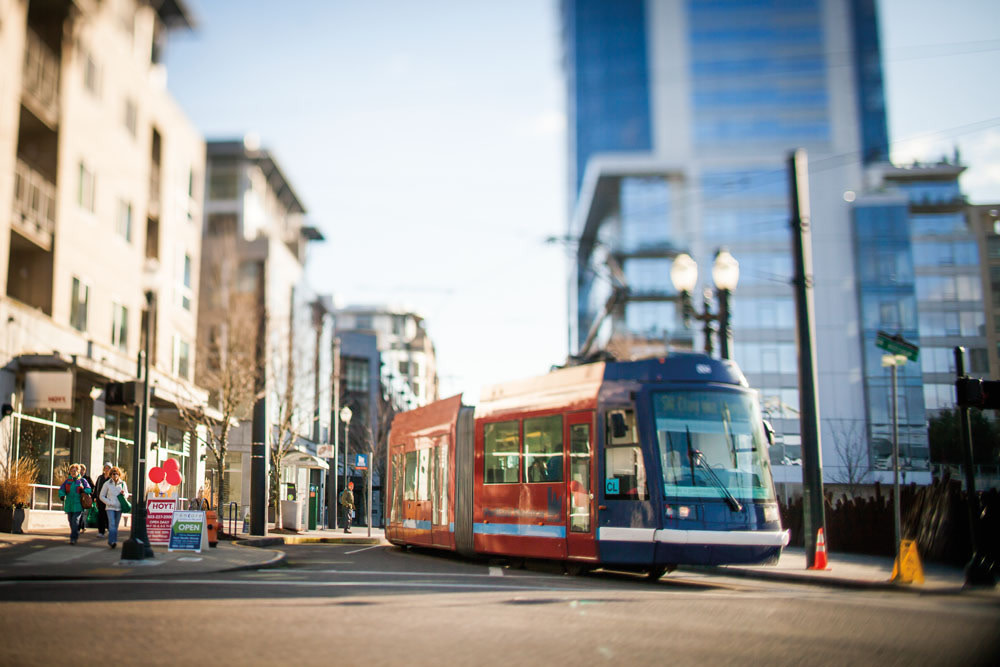
Image: Stuart Mullenberg
PEARL & NORTHWEST NEIGHBORHOODS
North Pearl and Slabtown | North of NW Northrup Street and west to 23rd Avenue
- Median Home Price
- $376,650 | $390,000
- Average Days On Market
- 145 | 85
- Inventory Supply*
- 3.6 months | 2.5
Boomers looking to downsize flooded the Pearl’s early market, attracted by handy transit options, proximity to performance venues, and chic, sleek condos. But as the gleaming, glass-fronted buildings march ever northward, the Pearl’s landscape has become increasingly attractive to citizens less, shall we say, seasoned. For example, the Ramona Apartments, which debuted in 2011 as one of the Pearl’s first experiments in family-oriented housing with its own school and affordable rents, now boasts children—most under 10—in more than half of its 138 units. The completion of the Fields Park at Overton and 10th gives condo-bound youngsters a place to somersault out their Saint Cupcake highs, while Childpeace Montessori offers another educational option, and a growing number of restaurants (Breken Kitchen, Olympic Provisions NW, and the Bent Brick) give Mom and Dad plenty of ways to tap into Portland’s culinary scene without having to cross the bridge. And while no one is saying much about new condo development (“I am beginning to at least hear the word again,” notes Phil Morford, founder of Civitas Development), a host of new apartment projects are already well under way. The 179-unit Savier Street Flats opened last month, and both the Parker Apartments at 12th and Pettygrove and Slabtown Flats at 20th and Raleigh have shovels in the ground. The rentals serve a different income level, Ramona developer Ed McNamara points out, which could shift further the area’s demographics. And New Seasons will be right there to serve them: the local chain plans to open its 13th Oregon store at 21st and Raleigh in 2014.
Living Here
Where you shop: Mio Seafood Market and Safeway
Morning buzz: Smith Teamaker
Date night: Olympic Provisions NW
For the dogs: The Fields Park
Commute time**: 10 minutes on the streetcar
Walkability score: 78 | 66
Schools: Chapman | West Sylvan | Lincoln
Coming soon: New Seasons at 21st and Raleigh in spring 2014
* Inventory supply figures provided by Keller William's Nick Krautter, based on the previous six months of sales.
** All commute times listed are via mass transit to Pioneer Courthouse Square.
North Pearl & Slabtown • North Williams Avenue
Dekum Triangle • SE Division Street • NE 42nd Corridor
Orenco Station • Interstate & Killingsworth
Real Estate Growth Map • Current Market Trends • Rental Market Madness
{page break}

Image: Stuart Mullenberg
BOISE NEIGHBORHOOD
N Williams Avenue | From N Fremont to Shaver Streets
- Median home price
- $311,000
- Average days on market
- 35
- Inventory supply*
- 0.7 months
North Williams plays a different rush hour soundtrack than other parts of the city: the beep of horns, creaking of brakes, and low hum of idling cars that form the melody elsewhere mingle with the whiz of air through bike spokes, the ding-ding of bells, and the occasional “on your left!” Here, traffic is as much about two wheels as four. Up to 4,000 bike commuters pedal this stretch of asphalt daily. It’s not by accident. The once-thriving epicenter of Portland’s African American community was blasted away in the ’50s by a proposed expansion of Emanuel Hospital in the 1970s that never happened, leaving empty blocks. A more recent designation as an Urban Renewal Area filled the void with more than $3.5 million in business loans and grants as incentives for developers and shop owners. Young buyers began flocking to the area’s lower home prices. Jon Kellogg and Thad Fisco’s Adaptive Development planted an early flag of renaissance with “The Hub,” a food-centric collection of shops and eateries that debuted in 2008. Next came Pix Pâtisserie (now Kenny & Zuke’s Deli Bar), the United Bike Institute, and just last spring, the Albert, a 72-unit luxury apartment building at Williams and Beech, which joined new properties like the ecoFlats and Sumner Brownstones. Coming in 2013: New Seasons will open its doors at Fremont and Williams, attracting even more gentrifying buyers hoping to find their own piece of Portland’s two-wheeled pie.
Living Here
Where you shop: Chop Butcher Shop and Whole Foods
Morning buzz: Ristretto Roasters
Date night: The Box Social
For the dogs: Irving City Park
Commute time**: 18 minutes via the no. 44 bus
Walkability score: 69
Schools: Boise-Eliot | Jefferson
Coming soon: New Seasons at Williams and Fremont, 2013
* Inventory supply figures provided by Keller William's Nick Krautter, based on the previous six months of sales.
** All commute times listed are via mass transit to Pioneer Courthouse Square.
North Pearl & Slabtown • North Williams Avenue
Dekum Triangle • SE Division Street • NE 42nd Corridor
Orenco Station • Interstate & Killingsworth
Real Estate Growth Map • Current Market Trends • Rental Market Madness
{page break}
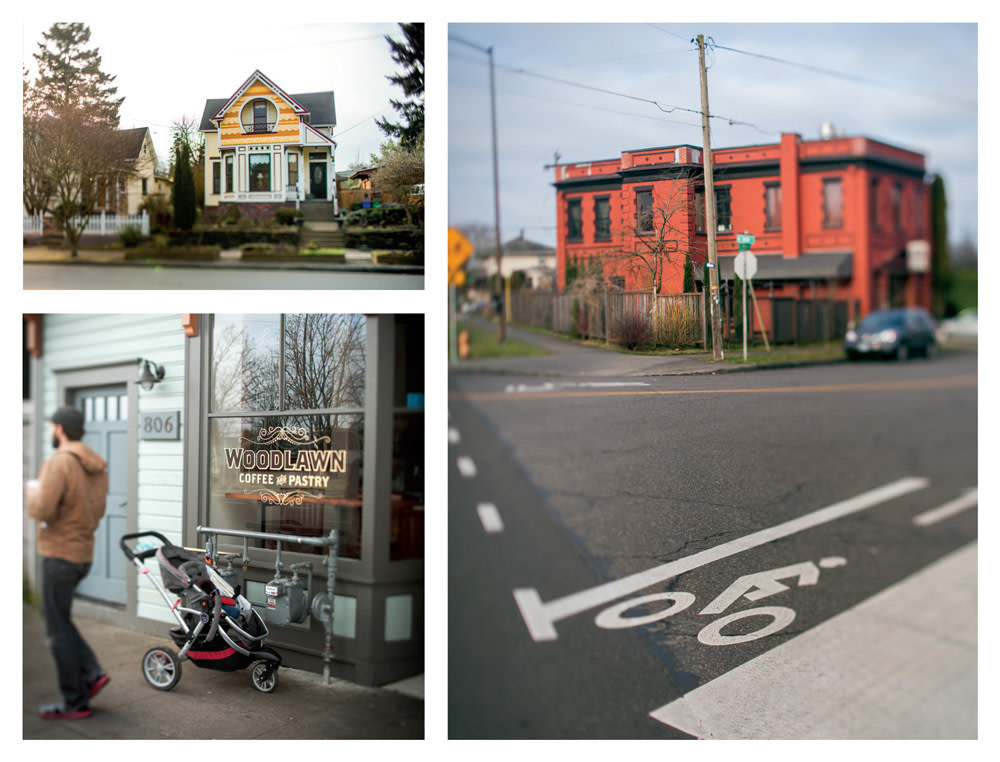
WOODLAWN NEIGHBORHOOD
Dekum Triangle | NE Dekum Street, between Seventh and 13th Avenues
- Median Home Price
- $249,950
- Average Days on Market
- 65
- Inventory Supply*
- 1.5 months
Mark Saldana has a nose for the “Next Big Thing.” One of the founding chefs at popular ¿Por Qué No? on N Mississippi Avenue before it was Hipster Central, Saldana and friends Ryan Wade and Jeffrey Ray dove into reviving the Dekum Street Market building at NE Eighth Avenue in 2006 as Good Neighbor Pizzeria, serving a menu of locally sourced doughy deliciousness. Joined shortly thereafter by Breakside Brewing, Woodlawn Coffee and Pastry, and the lauded Firehouse, the Dekum Triangle has begun to resemble its early-20th-century self. Back then a streetcar delivered Portlanders to a bustling neighborhood hub with its own theater, bakery, and general store adjacent to a Ladd’s Addition–like pattern of axial streets. Invigorated by the wide reach of the Interstate Urban Renewal Area, and first-time buyers who couldn’t afford other parts of the city at the height of the housing boom, Dekum quickly became a Northeast hot spot. But as the housing market waned, so did Dekum’s expansion, according to Jerry Johnson, principal at real estate consultancy firm Johnson Reid, as buyers could find more “investment grade” properties in blue-chip neighborhoods like Laurelhurst and Westmoreland. Now, as Johnson notes, market fundamentals seem to have shifted, which means Dekum looks to be on the rise again.
Living Here
Where you shop: Classic Foods (on first Fridays) and Fred Meyer
Morning buzz: Woodlawn Coffee and Pastry
Date night: Firehouse
For the dogs: Woodlawn Park
Commute time**: 35 minutes on the no. 8 bus
Walkability score: 64
Schools: Woodlawn PK–8 | Jefferson
Coming soon: Still Life Spirits, 2013
* Inventory supply figures provided by Keller William's Nick Krautter, based on the previous six months of sales.
** All commute times listed are via mass transit to Pioneer Courthouse Square.
North Pearl & Slabtown • North Williams Avenue
Dekum Triangle • SE Division Street • NE 42nd Corridor
Orenco Station • Interstate & Killingsworth
Real Estate Growth Map • Current Market Trends • Rental Market Madness
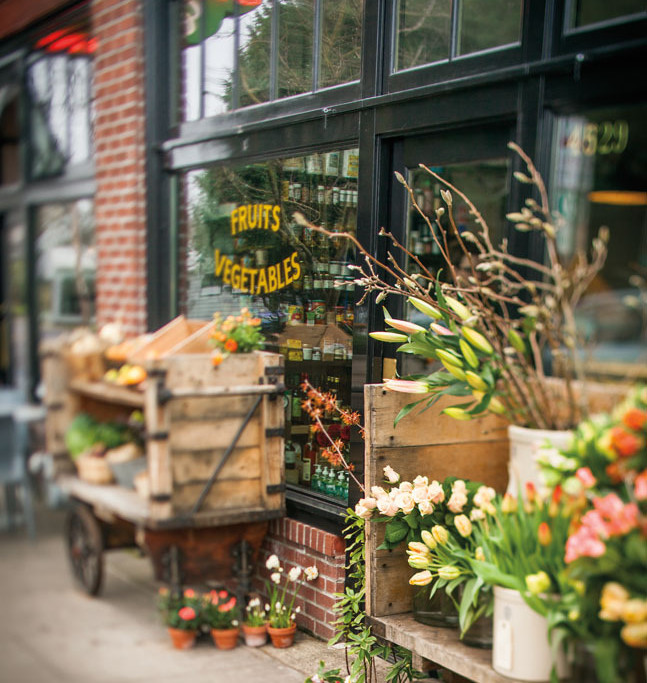
Image: Stuart Mullenberg
RICHMOND NEIGHBORHOOD
SE Division Street | From 20th to 50th Avenues
- Median home price
- $334,000
- Average days on market
- 37
- Inventory supply*
- 0.6 months
Division Street residents don’t have to do the dishes as often as the rest of us. With more than 40 restaurants—among them standouts like Pok Pok, Xico, and Ava Gene’s—lining the walkable blocks between 20th and 50th Avenues, residents here could eat out every night for a month without repeating restaurants. The street’s explosion as a foodie nexus, though, is a fairly recent one. It’s been nearly 40 years since then-mayor Neil Goldschmidt and neighborhood residents quashed Robert Moses’s Mount Hood Freeway Plan—which would have paved an eight-lane freeway to the popular peak between SE Division and Clinton Streets. Still, for decades, the commercial district lumbered under the plan’s legacy of restrictive zoning. Then, in 2006, the city rezoned the area neighborhood commercial and mixed-use, helping shops and restaurants sprout anew. Designating Division as a “Main Street” brought frequent-service transit lines (the no. 4 bus comes at least every 15 minutes) and, in an influx of city and federal funds—close to $2.5 million—to help pretty up the streets (think repaving, public art). And then Pok Pok exploded onto the national scene, sparking a chain of culinary development unlike anywhere else in the city. Exhibits A through G: the Woodsman, Cibo, Bar Avignon, Victory, Sunshine Tavern, the Whiskey Soda Lounge, and pie master Lauretta Jean’s. As a result, buying here today is tough, with median home prices soaring over $330,000, and an average time on the market that’s roughly half that of the rest of the city. But a spate of new apartments opening up (See “Kings of Division,” right) makes renting a potential option. Either way, just remember a move here probably means a larger dining budget and a stiffer exercise routine.
Living Here
Where you shop: The Woodsman Market (right) and New Seasons
Morning buzz: The original 1999 Stumptown location
Date night: Ava Gene’s (see Italy, Rocking)
For the dogs: Sewallcrest Park
Commute time**: 20 minutes on bus no. 4
Walkability score: 77
Schools: Abernethy | Hosford | Cleveland
Coming soon: Pok Pok owner Andy Ricker’s new noodle house, spring 2013
* Inventory supply figures provided by Keller William's Nick Krautter, based on the previous six months of sales.
** All commute times listed are via mass transit to Pioneer Courthouse Square.
North Pearl & Slabtown • North Williams Avenue
Dekum Triangle • SE Division Street • NE 42nd Corridor
Orenco Station • Interstate & Killingsworth
Real Estate Growth Map • Current Market Trends • Rental Market Madness
{page break}
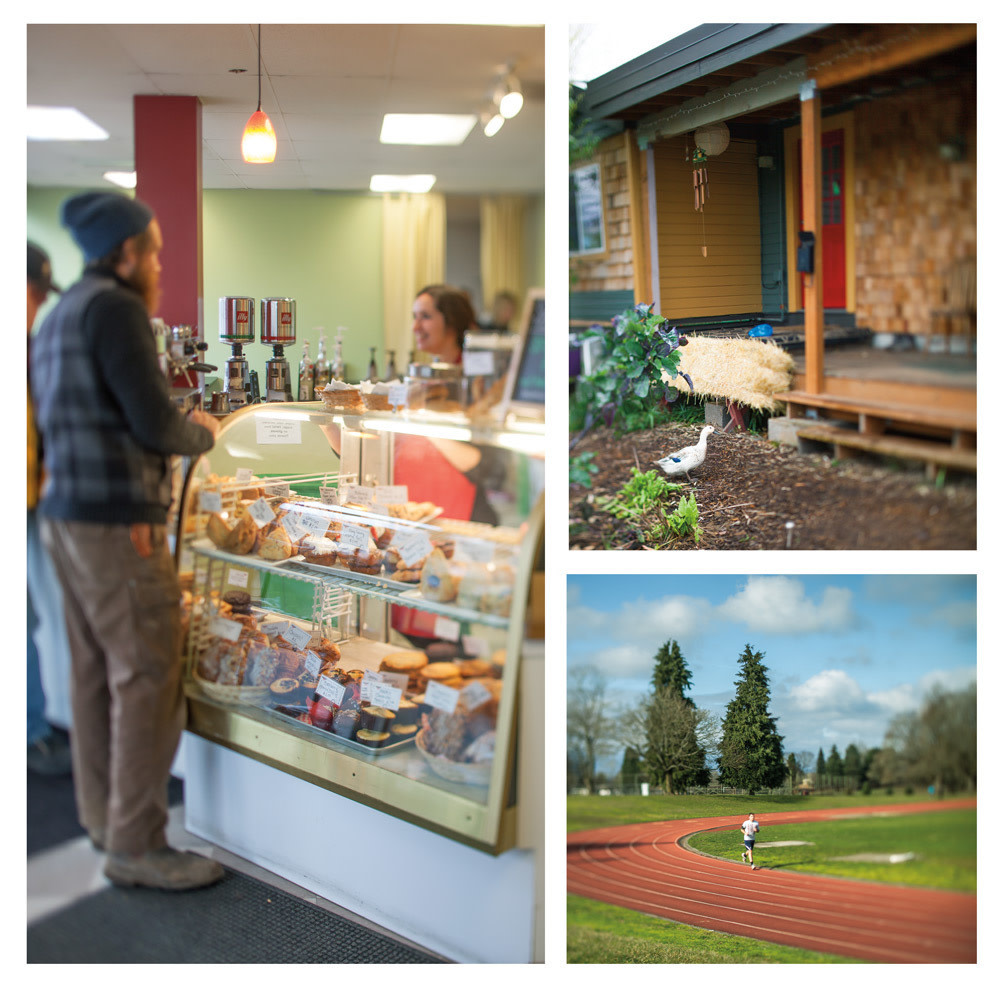
Image: Stuart Mullenberg
CULLY NEIGHBORHOOD
NE 42nd Corridor | Near NE 42nd Avenue and Alberta Street
- Median home price
- $200,000
- Average days on market
- 62
- Inventory supply*
- 2.1 months
NE Alberta Street might “end” at 33rd for Last Thursday revelers delighting in the eclectic scene, but for home buyers it’s just beginning. A few blocks up from the Northeast street’s hipsterfied galleries and cafés, at 42nd and Alberta a natty new neighborhood is emerging around Delphina’s Bakery, Rocket Pizza, Doggy Business pet day care, Rose’s Homemade Ice Cream, and coming this summer, the Old Salt Marketplace, a market, deli, and meat counter dreamed up by the trio behind Grain & Gristle. Just up the road, residents can pick up produce from the Cully Neighborhood Farm every Monday and Thursday, or frequent Cully Park, a former gravel pit mine on its way to transformation into a neighborhood green space thanks to a consortium of local businesses and organizations. Families attracted to the area’s large lots, easy access to sprawling Fernhill Park, and two Montessori schools have long adored this pocket of Northeast—as have those seeking green-minded neighbors like Environmental Building Supplies founder Markus Stoffel, who in 2008 completed his 2,000-square-foot net-zero Cully home. But as the housing market has tightened, competition for homes here has, too. Living Room Realty owner Jenelle Isaacson recently fielded a request for a home in the $400,000 range anywhere along the Alberta corridor, west of 60th. “There were zero,” she says. “Not a single home in that market.”
LIVING HERE
Where you shop: Cully Neighborhood Farm and New Seasons
Morning buzz: Delphina’s Bakery
Date night: Karaoke at the Spare Room
For the dogs: Cully and Fernhill Parks
Commute time**: 40 minutes via the no. 75 bus with a transfer to MAX
Walkability score: 39
Schools: Vernon PK-8 | Jefferson/Madison
Coming soon: Old Salt Marketplace, summer 2013
* Inventory supply figures provided by Keller William's Nick Krautter, based on the previous six months of sales.
** All commute times listed are via mass transit to Pioneer Courthouse Square.
North Pearl & Slabtown • North Williams Avenue
Dekum Triangle • SE Division Street • NE 42nd Corridor
Orenco Station • Interstate & Killingsworth
Real Estate Growth Map • Current Market Trends • Rental Market Madness
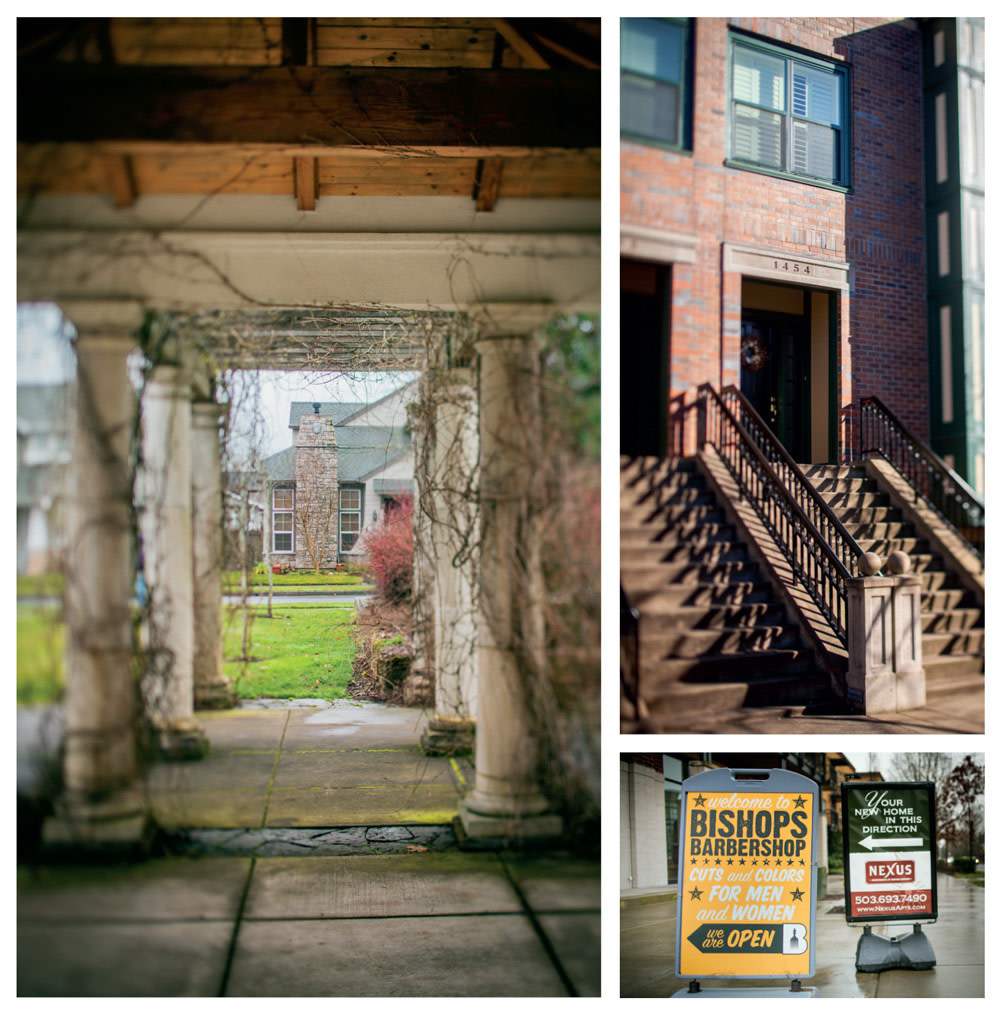
Image: Stuart Mullenberg
HILLSBORO
Orenco Station
- Median home price
- $201,250
- Average days on market
- 79
- Inventory supply*
- 1.6 months
One of the country’s seminal examples of suburban transit-oriented development, Hillsboro’s Orenco Station has been lauded by everyone from former Vice President Al Gore, who visited the mixed-use development in 1998 during the grand opening of the west-side light-rail, to Sunset magazine, which dubbed Orenco America’s Best New Burb in 2005. A 40-minute MAX ride from downtown Portland, and mere minutes from major employment centers Intel and Nike, Orenco’s skinnier streets give it an intimate and walkable feel. The development’s 209 acres include row houses, apartments, condos, one-acre Central Park, retail outlets like New Seasons and Starbucks, and several restaurants. Oh, and did we mention Orenco also hosts the Hillsboro Farmers Market in the summer? Conceived a full decade ahead of what Pricewaterhouse Coopers and the Urban Land Institute now call 2013’s trend of “urbanizing suburban nodes,” Orenco isn’t happy to rest on its nationally lauded laurels. Since the pedestrian-friendly development debuted, Orenco has added two apartment buildings (the Nexus apartments opened in 2007, and the 190-unit Platform14 was pre-leasing apartments as this hit the printer), drop-in child care (WeVillage opened its second Portland-area location here in 2012), and a Bishops Barbershop, among other retail. And there’s more on the way: while Intel builds its new fabrication centers on one side of Cornell Road, on the other Orenco will add the 45-unit Alma Gardens, an affordable housing building for seniors, and Holland Partners should complete the 304-unit Wrap Apartments by May 2014.
Living Here
Where you shop: Renaissance Premium Wines and New Seasons
Morning buzz: Starbucks
Date night: Yuki Sushi & Saki Bar
For the dogs: Central Park
Commute time**: 40 minutes aboard the Blue Line
Walkability score: 51
Schools: Orenco/Quatama | Evergreen/Poynter | Liberty
Coming soon: The 304-unit Wrap Apartments, May 2014
* Inventory supply figures provided by Keller William's Nick Krautter, based on the previous six months of sales.
** All commute times listed are via mass transit to Pioneer Courthouse Square.
North Pearl & Slabtown • North Williams Avenue
Dekum Triangle • SE Division Street • NE 42nd Corridor
Orenco Station • Interstate & Killingsworth
Real Estate Growth Map • Current Market Trends • Rental Market Madness
{page break}
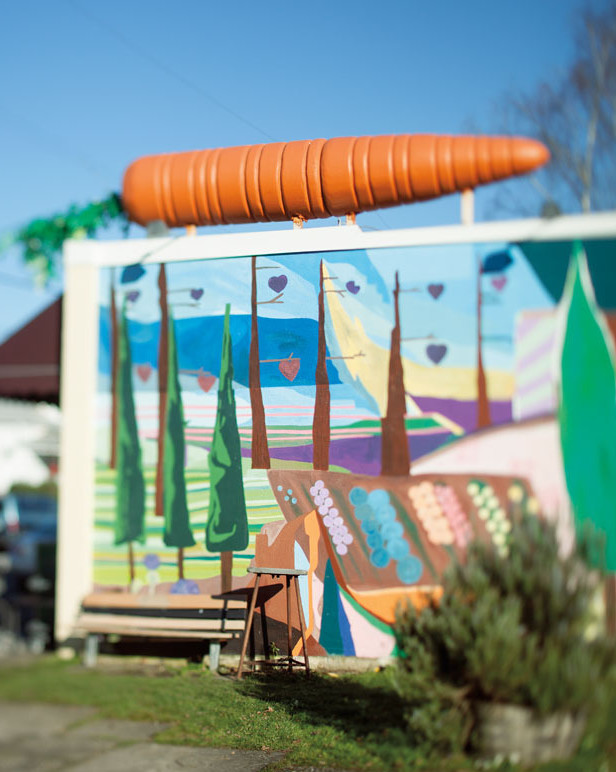
Image: Stuart Mullenberg
HUMBOLDT & OVERLOOK NEIGHBORHOODS
Interstate & Killingsworth | From N Overlook to Ainsworth Streets and east to Albina Avenue
- Median home price
- $311,000 (Humboldt) $262,000 (Overlook)
- Average days on market
- 58 | 46
- Inventory supply*
- 1.2 months | 1.7
A one-time automobile arterial—it was part of the route from Portland to Seattle—N Interstate Avenue owes its renaissance to another form of transportation: light-rail. Spurred by the launch of the Yellow Line in 2004, Interstate soon saw some of its shabby-but-not-so-chic roadside motels ripped out and replaced with new shops and services. There’s still plenty of neon, but now it’s joined by Stumptown Coffee (at Black Cat Café and Pub), arguably the city’s best buffalo wings (Fire on the Mountain), and affordable housing (the Prescott Project, a 155-unit apartment building slated to open in early 2014). Young couples and families (as well as workers at the nearby Adidas HQ) flocked here in the early ’00s ... and continue to. “The target market for the [Corso] apartments will be households aged from 20 to 40 years old, earning between $25,000 and $75,000 per year,” states real estate consultancy firm Johnson Reid’s 2011 market analysis for the Corso Apartments, currently under construction at Interstate and Sumner. As Interstate’s cool quotient has grown, so too have pocket communities along its edges. To wit: Albina and Sumner, where so-good-and-so-secret-we-don’t-want-to-tell-you bakery Sweedeedee, Cherry Sprout Produce, Red Fox Bar, Mississippi Records, and the Portland Modern Art Museum all hum in hipster harmony. But if you want a ticket on the NoPo train, you’ve got to be quick. Inventory is under two months, reports real estate agent Nick Krautter of Keller Williams. That’s partly because the neighborhood, with its quaint Craftsmans, large lots, and picturesque sunset views, is so small. But it’s also because of what a 15-minute ride from downtown on the Yellow Line delivers you to: two grocery stores, a developing food scene, and more house for your money than in many other parts of the city. Better find your way fast.
Living Here
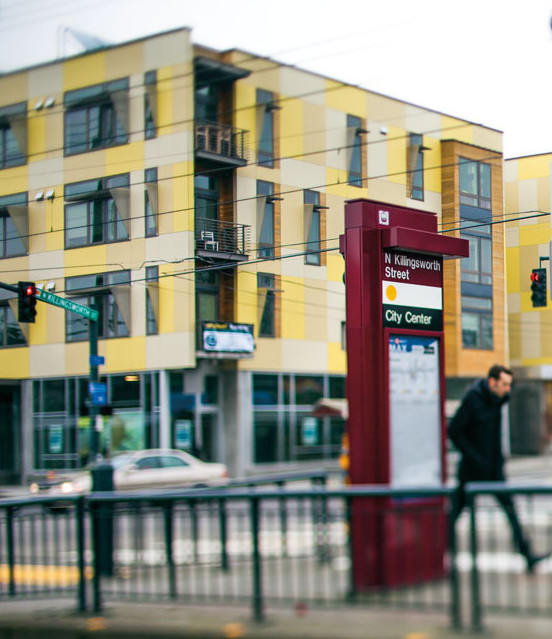
Image: Stuart Mullenberg
Where you shop: Overlook Farmers Market (May–Oct) and New Seasons
Morning buzz: Sweedeedee
Date night: Miho
For the dogs: Overlook Park
Commute time**: 20 minutes on the Yellow Line MAX
Walkability score: 73 | 34
Schools: Beach PK–8 | Jefferson
Coming soon: Three new apartment projects arrive this year: the 155-unit Prescott Project, the 46-unit Corso, and the chic 30-unit Jarrett Street Lofts.
* Inventory supply figures provided by Keller William's Nick Krautter, based on the previous six months of sales.
** All commute times listed are via mass transit to Pioneer Courthouse Square.




